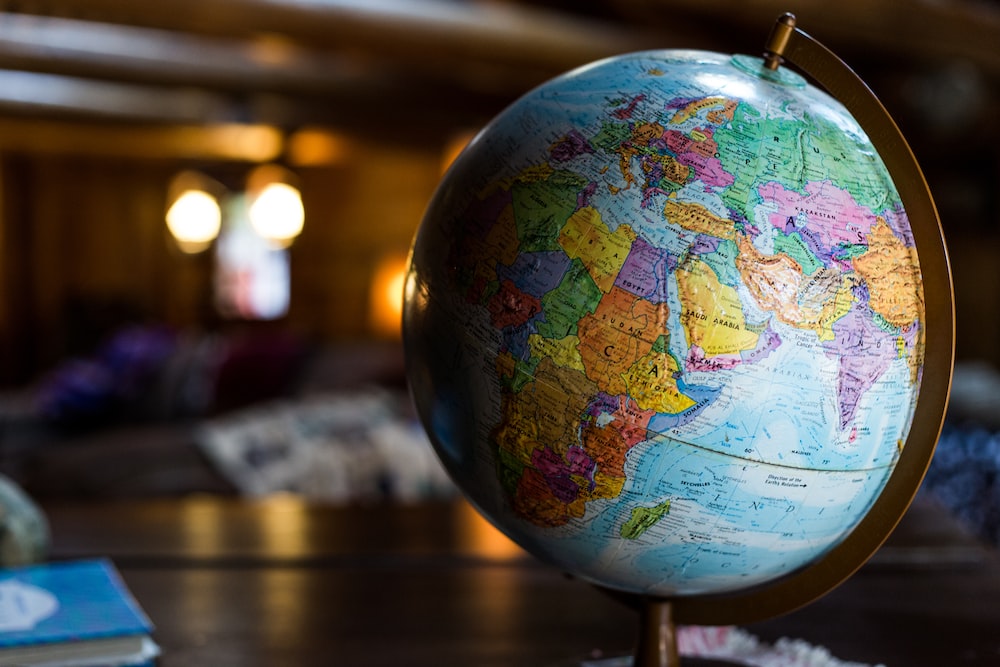This blog will provide you with some great
advice on how to use maps in your study plan to answer geography-related questions.
It will assist you in comprehending the significance of maps while responding
to questions in the UPSC Exam. The questions are never straightforward, and
UPSC will assess your capacity to connect themes.
Although geography may not be everyone's cup
of tea, future public servants, particularly those who will work in the forest
or foreign services, should brush up on their skills for obvious reasons.
Solve past year UPSC map
questions
Solve the map-based questions from the previous ten years to get a sense
of the questions asked. When looking at a map, pay attention to such areas.
After that, finish lots of mock papers in which map-based questions are
asked. Get a world map and an Indian map taped to a wall or your study desk
nearby so you can continuously return to them for improved memory.
Start from the India map
Discover everything there is to know about India's neighbours. Make a
list of the many Indian states that have borders with these nearby nations.
Give the nations of the Indian Subcontinent a comparatively higher priority.
Analyse the Indian Ocean's islands and the peninsular region of India in
detail using the map of India.
Drawing a political map (an outline) of India by hand is necessary for
the GS I and GS II Mains Papers. Find out how many and which states have
borders with each other.
Study the locations of all the significant cities in India. You should
be able to direct them as well as identify the city that is to the west, east,
north, or south of a specific city.
Make a note of any significant cities that have lately made headlines.
Ex. Kasargod in Kerala gained international attention for using the insecticide
Endosulfan excessively.
The eastern, western, northern, and southern boundaries of the states
and UTs should be clear to you.
All Indian rivers' origins, sources, flow paths, and tributaries should
be noted down.
Locate the left and right bank tributaries of significant rivers. For
each significant river drainage basin, you should sketch a crude diagram on a
piece of blank paper.
On a political map, you should be able to identify lakes and indicate
which states share them.
Additionally, many lakes have distinct characteristics. Make a list of
these lakes separately.
Make a note of the size and significant peaks of each mountain range,
including the Himalayan and Peninsular ranges. On a political map of India, you
should be able to depict the entire mountain range together with its highest
peak.
Analyse thoroughly the locations of different glaciers. It's also
important to note the numerous rivers that originate in these mountain ranges
and glaciers.
Examine the national parks, flora, fauna, states, and other features
that are present in the different gaps and passes that these mountain ranges
contain.
For the mapping of the Western Ghats and the Eastern Ghats, use a
comparison strategy.
The wide variety of Indian natural plants should be researched in light
of the country's diverse climate.
Make a note of the geographic distribution of a specific kind of forest
throughout India.
You ought to be able to identify all significant national parks, tiger
reserves, wildlife refuges, biosphere reserves, etc., as well as their
geographic range across states.
You should be able to name all the significant locations in India,
including holy sites, wetlands, nuclear power plants, ports, plateaus,
wetlands, mineral-rich areas, etc., as well as other significant physiographic
features nearby.
Study World map by separating
it region wise
Understand deeply what countries are bordered by the Black Sea or the
Caspian Sea. What about major rivers, their boundaries with other countries,
and the channels, straits, and navigational routes that pass through them? What
passageway or waterway links the Red Sea to the Mediterranean Sea? Which of
these nations does the Strait of Malacca pass through or where is it located?
The order of the Yangtze River, Yellow River, etc. on the map? or ocean
currents such as the Kuroshio Current, West Drift, and Gulf Stream, among others.
Country borders and whether they are landlocked or not; for instance,
which African and Central Asian nations are landlocked? Or what nations are on
Syria's border? Are Israel, Jordan, and Syria landlocked or not?
Major newsworthy sites, their positions, and the direction they are
arranged in the map (North-South or East-West), for example, where are
Tashkent, Almaty, the Gaza Strip, and the Cayman Islands? Alternately, order
these European nations—France, Germany, Italy, Greece, etc.—from north to
south.
Major geographical features and the areas in which they are found, such
as the locations of the Rocky Mountains, Lake Baikal, Alps, Ural Mountains,
etc. Which of the following nations is traversed by the Amazon or Nile rivers?
Major lines and the nations that cross them; for example, which nations
cross the equator, tropic of Cancer, and tropic of Capricorn?
Important biodiversity hotspots and conversation regions around the
world, such as the Indian Ocean Islands, Madagascar, and the Ross Sea in
Antarctica
Important international projects and the nations they affect, such as
the International North-South Transport Corridor, Ram Setu, Kaladan Multimodal,
Chahbahar Port, String of Pearls, etc.
Bottomline
Map research doesn't add to your workload and can be done for fun during
study breaks. Understanding will be considerably aided by mind maps of India
and the rest of the world, which will make studying many aspects of current
affairs, geography, world history, economy, etc. more intuitive. The ability to
create decent maps and locate significant locations/features will be highly
helpful, especially in GS-1 Geography/History and GS-3 Economy. However, map
work is not helpful in getting easy marks in the prelims.

